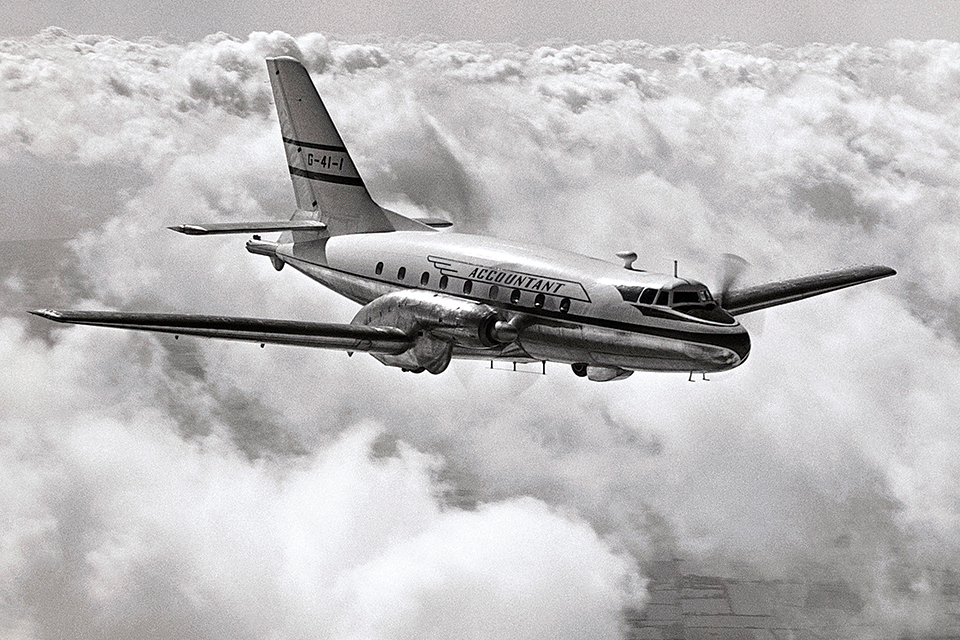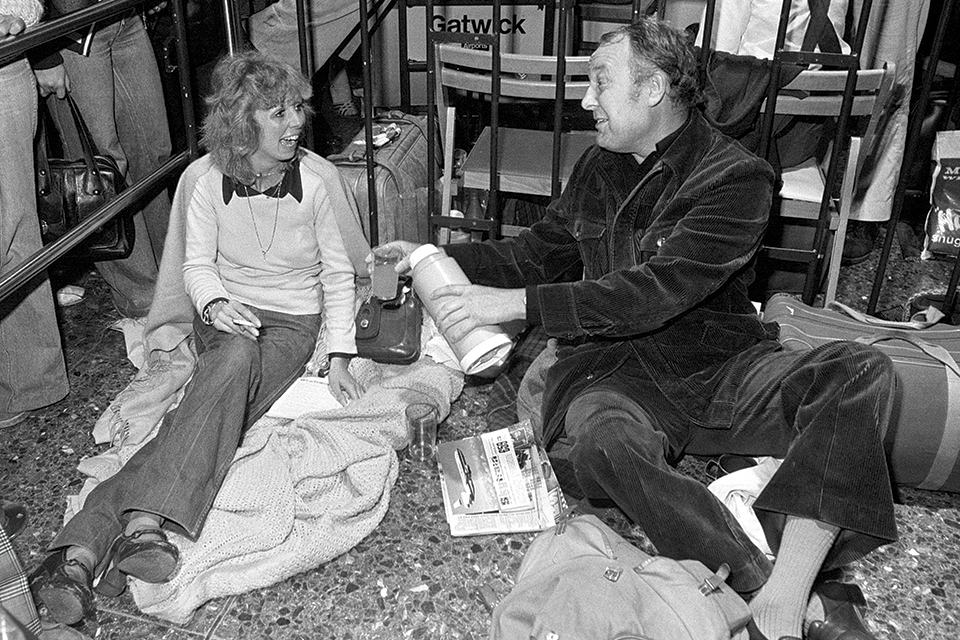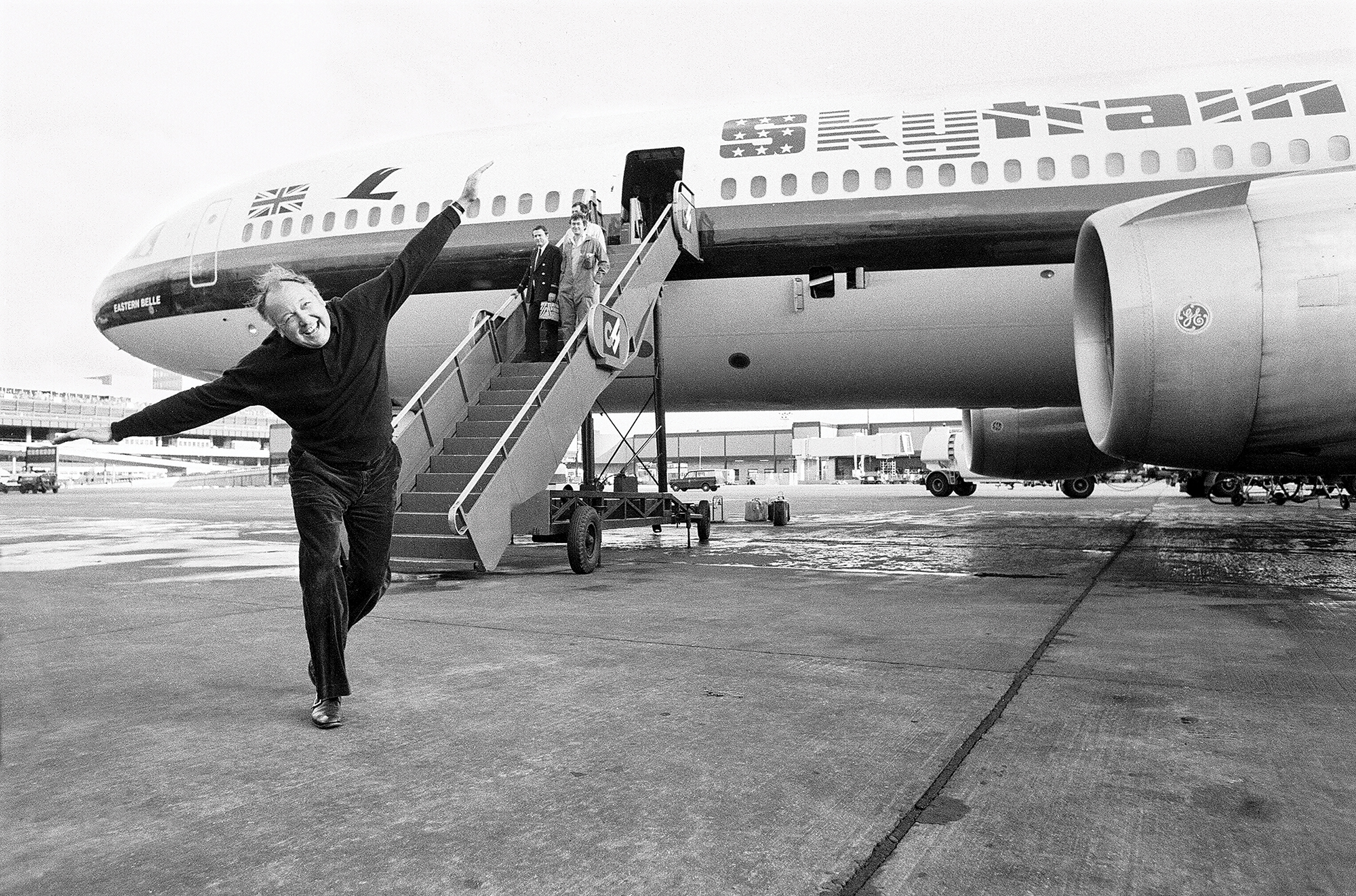The maverick British entrepreneur rocked the airline industry with his no-frills approach and low-cost transatlantic flights.
To the aviation world Sir Freddie Laker was truly a legend in his own time. A tycoon of working-class origins who built up his business empire from nothing, Laker makes the entrepreneurs on “Dragons’ Den” and “Shark Tank” seem like amateurs. Competing directly against the world’s major airlines, the low-fare carrier that the freewheeling British businessman founded in 1966 shook the commercial aviation industry to its foundations in a manner that few have accomplished before or since.
In the end it took the combined efforts of all the airlines against which Laker was in competition to drive his company out of business in 1982. Since then, however, a number of budget airlines have emulated his business model. Virgin Atlantic founder Richard Branson acknowledged Laker as his role model and mentor. While not all of Laker’s business decisions turned out well, his rollercoaster career will be long remembered.
Born in Canterbury, England, in 1922, Frederick A. Laker briefly attended the Simon Langton Grammar School, which proudly numbers him as one of its illustrious alumni in spite of the fact that he was expelled for poor academic performance. Laker began his aviation career as an apprentice at Short Brothers and then flew for the Air Transport Auxiliary from 1941 until 1946. After World War II he was briefly employed by British European Airways.
Impatient with working for others, Laker borrowed £38,000 and went into business for himself, buying and selling war surplus aircraft that his company, Aviation Traders Ltd., would refurbish or modify into cargo carriers. As luck would have it, ATL was in exactly the right place and at the right time to cash in on the 1948-49 Berlin Airlift. Every airworthy plane that could carry cargo was suddenly in demand, and Laker’s fledgling company did very well delivering some of the goods.

In 1952, not content with converting and selling surplus cargo planes, Laker initiated an ambitious plan to produce an original airliner of his own to replace the aging Douglas DC-3, hundreds of which were still flying all over the world. Powered by two Rolls-Royce Dart turboprops, Laker’s ATL-90 featured modern tricycle landing gear and could be configured either as a passenger airliner or an end-loading cargo plane with a hinged nose section. The ATL-90 was marketed as the Accountant, apparently in an effort to stress its economy of operation to the airline bean-counters.
First flown on July 8, 1957, the Accountant was displayed at the Farnborough Airshow two months later, but it attracted little enthusiasm from prospective buyers. Apart from the airplane’s unfortunate name, the biggest problem was that Laker was not the only one to recognize a potential market for a DC-3 replacement. By the time the Accountant was flying, two rivals were already airborne: Handley Page’s Dart Herald and Fokker’s F27 Friendship. In addition, Hawker Siddeley was working on the similarly sized HS-748. Like the ATL-90, all of those airliners were powered by a pair of Darts, but all of them were larger and had room for far more passengers than the 28-seat Accountant. Moreover, they were all built by companies that possessed extensive production facilities, which ATL lacked.
At least Laker had the sense not to throw good money after bad and abandoned development of the airliner. In January 1959 the Accountant was grounded and the following year it was scrapped.
ATL’s next aircraft, the ATL-98 Carvair, proved both a technological and financial success. It succeeded because this time Laker aimed at a specialized niche market that the large manufacturers had either neglected or were not interested in pursuing. Furthermore, rather than create the aircraft from scratch, Laker converted the Carvair from existing aircraft, which was already ATL’s specialty.
![Laker’s improvised ATL-98 Carvair, based on the Douglas DC-4, proved a big success as a car ferry across the English Channel. (The Royal Aeronautical Society [National Aerospace Library]/Mary Evans Picture Library)](https://www.historynet.com/wp-content/uploads/2020/10/Freddy-Jag-960_640.jpg)
In 1954 Laker had founded a provisional airline, Channel Air Bridge, which flew people and their cars across the English Channel using the Bristol 170 Freighter, a twin-engine aircraft that could only accommodate three autos at a time. By the end of 1958, it was clear that for the company to survive it needed a bigger airplane. A survey undertaken in 1959 indicated that it would be financially unfeasible to develop a new car ferry from scratch, and that any of the ultra-large cargo aircraft currently in production would be too expensive to buy. Laker came up with the answer: Contract ATL to convert WWII-surplus cargo planes into specialized ferries.
The Douglas DC-4 was selected for conversion into the ATL-98 Carvair. Originally developed as a four-engine transcontinental airliner, the DC-4 entered production for the U.S. Army Air Forces during the war as the C-54 long-range transport. A total of 1,170 C-54s were delivered to the military, while others were built after the war as DC-4 airliners. By the late 1950s those aircraft had been superseded, both in military and airline service, by larger and more powerful transports. As a result, ATL was able to obtain perfectly good C-54s and DC-4s on the secondhand market for very reasonable prices.
The largest part of the conversion involved replacing the entire fuselage forward of the wings with a new nose section. The new structure added 8 feet 8 inches to the overall length and included a large side-opening door in the nose to enable end-on loading and discharging. It also incorporated a completely new flight deck, raised above the level of the fuselage, resulting in an unobstructed cargo space from nose to tail. The raised flight deck gave the Carvair a curious resemblance to the later Boeing 747 jumbo jet. Other less obvious changes included a taller vertical stabilizer and the complete rerouting of all the controls from the cargo space.
First flown on June 21, 1961, the Carvair could accommodate five autos along with 22 passengers. It quickly attracted a great deal of interest. While the Carvair couldn’t compete for sales to the major airlines against advanced new jets, it was perfectly suited to the specialized market sector for which it was intended. It even achieved the ultimate in high-tech product placement when it was featured in the 1964 James Bond film, Goldfinger.
ATL built and sold a total of 21 Carvairs, including three to Ireland’s Aer Lingus and two for use by U.N. peacekeeping forces in the Congo. Once they were retired from use by their original operators, the surviving Carvairs enjoyed long and successful careers with new owners, moving oversized cargo all over the world. At least one Carvair, operated by Gator Global Flying Services and based at Gainesville Municipal Airport in Texas, is reportedly still airworthy.
Not content to rest on the Carvair’s laurels, in 1965 Freddie Laker sold off the interests he had acquired in ATL and British United Airways (for whom he had served as managing director since the company’s inception in 1960) in order to start an entirely new airline. Established in 1966, Laker Airways began as a charter airline that initially concentrated on popular British resort destinations in the Mediterranean region and the Canary Islands. Due largely to Laker’s marketing and operational innovations, it quickly became one of the most profitable charter airlines in the world. Laker offered lower charter rates during the off seasons, as well as reasonable time-charter rates, ensuring that his airliners flew year-round. He also introduced new low-thrust takeoff procedures that saved fuel, thereby extending the distances his aircraft could fly and simultaneously reducing maintenance costs. Still, Laker had much more ambitious plans, which finally came to fruition with the 1977 launch of his budget Skytrain service.

The state of aviation technology had been steadily improving for decades. Yet air travel remained a high-cost luxury, available only to the so-called jet-setters who could afford it. In order to compete against the major airlines, Laker planned to offer prospective passengers transatlantic service at a fraction of the going rates.
In 1971 Laker applied to Britain’s Air Transport Licensing Board for permission to establish a budget transatlantic airline service with tickets priced at roughly one-third of what the established carriers were charging. Needless to say, his proposal incurred a great deal of resistance from the airline industry. After six years of legal battling, however, he was finally able to initiate scheduled air service.
To a large extent airline ticket prices were controlled by the International Air Transport Association, a cartel system established by the carriers. Laker Airways, however, was a wholly private, independent British airline outside of the cartel. In any case, Laker was not interested in competing for the luxury air travel market. Instead, his no-frills transatlantic passenger service was akin to a flying bus. Seats were sold on a first-come, first-served basis. Laker cut out many of the amenities to which airline passengers had become accustomed, with no inflight meals and baggage limited to 30 pounds. As it turned out, plenty of passengers were willing to put up with those inconveniences for tickets priced at less than half the rates charged by major airlines. Laker had no trouble filling his flights to capacity, and his budget airline made a handsome profit.
Equally embarrassing to the major airlines was Laker’s personal marketing style. Absent were the usual images of airborne grace and elegance that normally adorned airline advertising. In their place was Freddie Laker himself, with tousled hair and working-class accent, grinning like a used-car salesman as he touted his budget airline. Laker proudly boasted that Skytrain represented “the end of skyway robbery.” In 1978 he was even granted a knighthood. While Laker’s style may have seemed undignified to his competitors, what they really found unforgivable was the fact that his new business model was actually working.
As a result, all the major airlines against which Laker was competing lowered their fares to the level he was charging. Although they were losing money, they agreed among themselves to maintain those low fares until they had driven Laker out of business. It was a deliberate effort by the cartel to drive out a brash interloper.
The economic recession that occurred during the late 1970s didn’t help Laker’s financial situation. In 1981 the final nail in his airline’s coffin was the revelation that the company was undercapitalized and overextended. Encumbered with debts of £270 million, Laker Airways went bankrupt on February 5, 1982.
Laker filed an antitrust lawsuit against a number of the carriers that had colluded to bring his airline down. In 1985 they agreed to settle, and Laker received payments amounting to £93 million, including £43 million from British Airways alone. That victory enabled him to pay off his creditors, but since his airline was defunct it was at best a pyrrhic victory.
In 1992 Laker reentered the airline business, but things were never the same. In partnership with Texas entrepreneur Oscar Wyatt, he established a twice-weekly service between Florida and the Bahamas. In 1997 the service expanded with weekly flights between Miami and London. Laker’s new transatlantic enterprise proved short-lived, however, folding in 1998. Laker died in 2006, at the age of 83.
Sir Freddie Laker was an entrepreneurial swashbuckler who cut a swath through the airline industry. Many other budget airlines, such as People Express, Ryanair, Virgin Atlantic, Southwest and JetBlue, have emulated his business model, with varying degrees of success. Although the major airlines succeeded in putting him out of business, Laker’s influence continues to reverberate within the industry today.
Frequent contributor Robert Guttman writes from Tappan, N.Y. Additional reading: Fly Me, I’m Freddie!, by Roger Eglin and Berry Ritchie; and The ATL-98 Carvair: A Comprehensive History of the Aircraft and All 21 Airframes, by William Patrick Dean.
This feature originally appeared in the November 2020 issue of Aviation History. To subscribe, click here!





